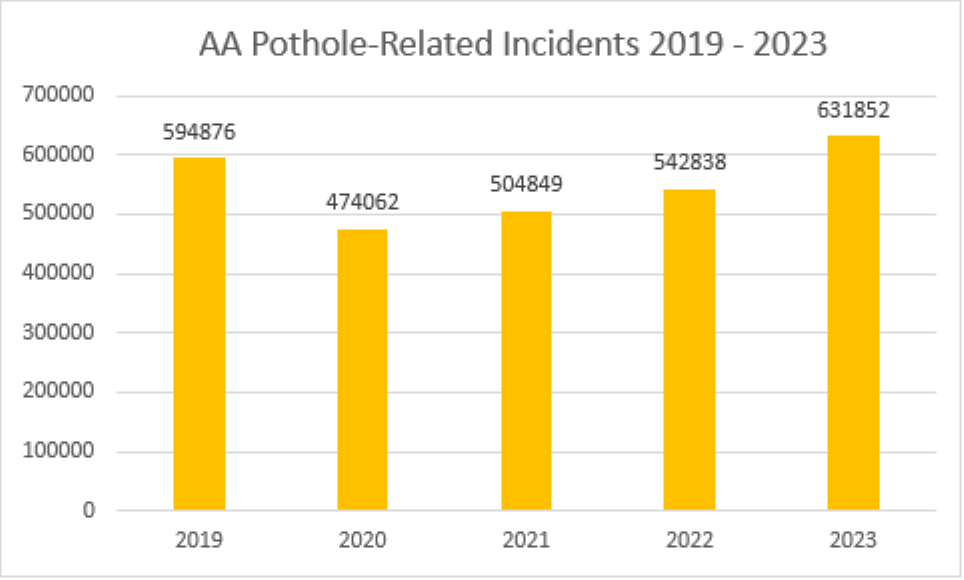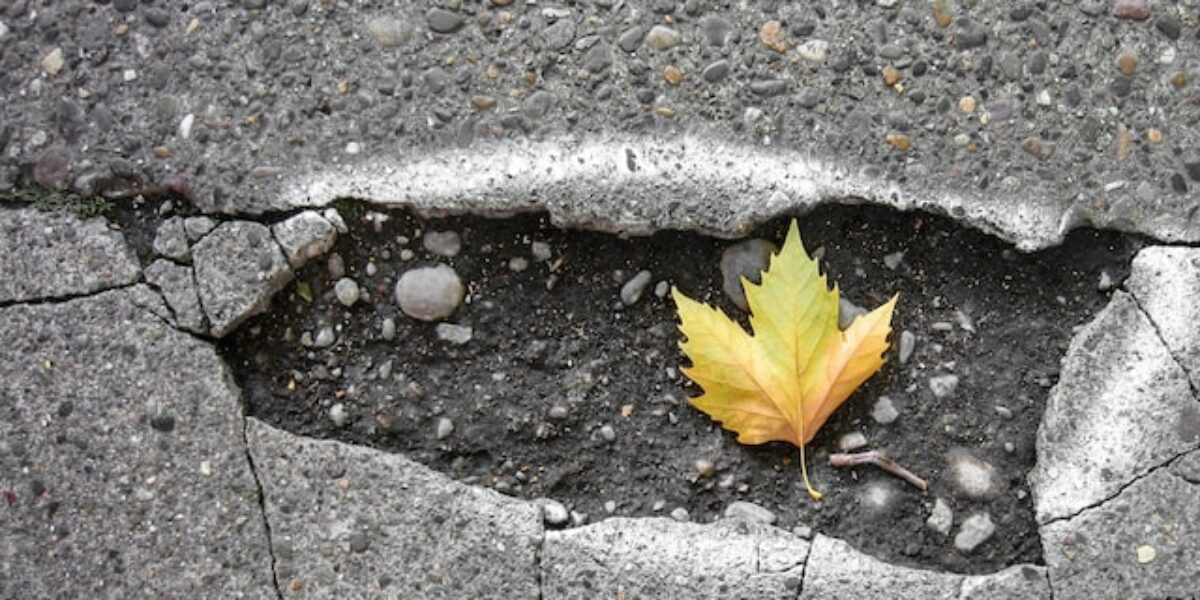Redressing the road surfaces
Pothole day reveals record vehicle damage and calls for a clear route forward
While the current freeze brings its own road safety challenges, its not just the short-term effects that cause concern.
Any water fills cracks, potholes and damaged road surfaces, then freezes, expands and brake up the road surface even more.
Pothole damage to vehicles is already at record levels this year, and it is only going to get worse.
Broken roads, broken cars
Pothole damage to vehicles cost a staggering £474 million in the past year, according to new figures released b the AA.
The roadside breakdown service says it dealt with 631,852 pothole-related incidents in 2023. This is the highest for five years, damaging tyres, wheels, steering, and suspension.
It represents an increase of 16% on their previous year’s figures (543,000 incidents). Last month alone the AA dealt with 62,000 pothole related incidents, an increase of 15% when compared to December 2022.

Record wrecking
RAC patrols are also recording record levels of damage due to poor road surfaces. Their patrols attended nearly 30,000 pothole-related breakdowns over the course of the year, up by a third (33%) on 2022.
This is equivalent to 80 breakdowns a day, dealing with broken suspension springs, damaged shock absorbers and distorted wheels.
Data for the fourth quarter of 2023 reveals the RAC attended 5,153 breakdowns caused by potholes, the highest since 2017.
Money matters
In September last year, the government announced new funding for roads to repair the crumbling A and B road infrastructure. Despite the prime minister allocating £8.3bn for local councils to have access too, many critics and specialists argue that roads have been left to rot for so long that even this figure illm fall short of remedying the issues.
“Local councils have been cash-strapped for years due to lower road maintenance budgets,” states RAC’s head of roads policy, Simon Williams.
“Fortunately, the Government has committed an extra £8.3bn of funding to local councils over the next 11 years, which we hope will give squeezed authorities some certainty of cash to help them plan consistent longer-term maintenance.
“Now we urge the Department for Transport (DfT) to lay out clear guidance as to how this money should be best used so that councils can actually improve their roads for the future.”
Cheap not cheerful
Unfortunately, the common mistake, but the cheaper option, has been to patch the worst potholes. However, the endless discount patching leaves the roads weak and vulnerable, and the problems only get worse.
The RAC wants local highways authorities to completely resurface those in the worst condition. Road surface dressing needs to be carried out between April and September on roads that are starting to deteriorate. Repairs in cold, wet winter months are a recipe for more problems.
“It’s not just about plugging potholes, it’s a question of getting roads up to a reasonable standard and keeping them that way so drivers and indeed those on two wheels can finally feel confident and safe on their journeys,” he added.
New groups
A new partnership has been launched between road users and industry to help tackle potholes.
The Pothole Partnership, formed by the AA, the National Motorcyclists Council, British Cycling, IAM RoadSmart, the British Motorcyclists Federation and manufacturer JCB, has unveiled a new five-point plan to help tackle the issue.
It has estimated that pothole damage to vehicles cost £474m in the past year. This is based on an average cost of £250 for repairs for each incident it attended and rounded up to represent all drivers.
AA president, Edmund King (pictured below), said: “Currently, we often have a vicious circle of pothole formed, damage caused, pothole patched, pothole reappears with more damage caused – when what we need are more permanent repairs.
“Potholes are the number one concern for 96% of drivers and can be fatal for those on two wheels so hopefully pressure from the Pothole Partnership will lead to permanent repairs.”
A way forward
The resulting pothole pledge calls for a cut to cheap patching repairs, and rather road resurfacing and longer terms repairs.
All local authorities/contractors are also urged to adhere to UK-wide repair and inspection standards, and report annually on the repairs undertaken.
Furthermore, it wants Government to demonstrate greater urgency by accelerating and increasing spending of the £8.3bn pothole funding. The first three years are essential and need to receive priority funding. There also needs to be total clarity on the distribution to local authorities, that money is ringfenced to help deliver innovations that enable permanent repairs. What’s more, there needs to be full transparency from local authorities on their roads repair backlog, categorised by potholes, patching works and road resurfacing.
Hole in one
Speaking on Pothole Day (15th Jan), the chair of the Asphalt Industry Alliance (AIA), Rick Green, said: “We are optimistic that the Government’s recent £8.3bn commitment to local roads could improve conditions and we agree with the Pothole Partnership’s view that the funding allocation needs to be front-loaded so local highway engineers can also start addressing the backlog of necessary structural repairs now.
“This upfront investment would then enable local authorities to implement planned preventative maintenance programmes going forward. This would support a lower carbon, whole-life approach to local highway maintenance, helping to deliver sustained improvements and enhanced network resilience, saving money over the long-term, and ensuring our local roads are able to support future challenges.”





